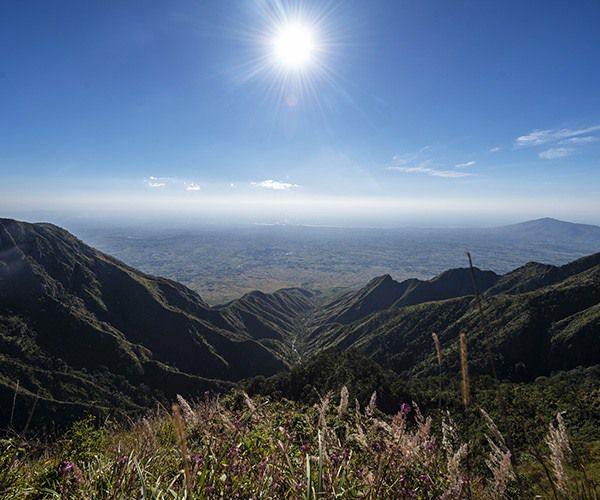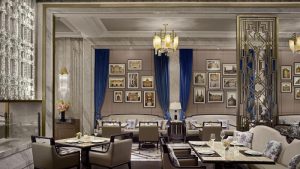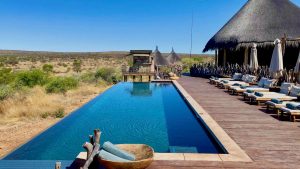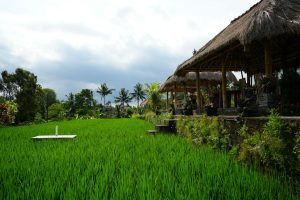
Malawi is best known for its magnificent Lake Malawi and is increasingly gaining a reputation as a top safari destination. But there is much more that the Warm Heart of Africa has to offer its visitors, including some stunning highland scenery and rich cultural interactions. Having covered those higher profile attractions focussed in previous blogs, this time we’re focussing on some of the places to visit beyond the lakeshore and the game parks. Since the south of the country remains the most visited area, and is packed with ‘alternative’ attractions, where better to start
Zomba Plateau
Zomba Plateau is a magnificent table-top mountain that overshadows the town of Zomba which sits below it. The peaks on the top of Zomba Plateau rise to altitudes over 2000m and on three sides, the massif has scarp-like edges with the height from plateau top to floor of the Rift Valley a huge 1200 metres. Zomba Plateau has a slight depression in the centre with the higher ground and the peaks forming an outer rim. Streams run radially through the forests over small waterfalls and rapids until they join to form the Mulunguzi river, that drains towards the south-east.
Much of the plateau is forested, indeed it is one of Malawi’s Forest Reserves. There are great stands of cypress, Mexican pine and the slower growing but magnificent Mulanje cedar. Forestry villages are sited on the slopes of the mountain and foresters will be seen walking enormous distances across the plateau while groups of women carry headloads of firewood to their houses. In the ravines and on other steeper slopes, where commercial forestry cannot take place, there is an incredible variety of natural vegetation from jungle-like creepers to wild flowers, from ferns and thornbushes to orchids and lichen. The really wild areas are best seen by walking along the edges of the streams and by the waterfalls. It is here too that large butterflies flutter, hover and milk the nectar of the flowering plants. On the lower slopes are plenty of monkeys and baboons. Leopard and hyena are also in the forest but most unlikely to be seen. Birdlife is varied and prolific.

Not far from the point of reaching the plateau top are a trout farm, Mulunguzi Dam and the Mandala Falls, all worthy of a visit. The easiest way to explore as much of the plateau as possible in a short time is to drive around it. Unfortunately the roads suffer damage from the giant logging trucks so 4×4 is usually needed. The Outer Circular Road takes about half a day if stopping and making short walks to viewpoints. Tackling this route clockwise takes you past the pretty Williams Falls and shallow Chagwa Dam before returning to the edge of the plateau and the viewpoints for which the Plateau is best known. The first is Queens View, named after a visit, in 1957, by the UK’s Queen Mother and the second takes its name from Emperor Haile Selassie of Ethiopia. This point was once said to provide the “best view in the whole of the British Empire”. Spread out below are the vast Phalombe Plains, peppered with small hills. Zomba town too can be seen laid out like some architect’s model. Beyond, on a clear day, Lake Chilwa and even Mount Mulanje (70 km away) are visible. The road continues around the plateau edge, passing more viewpoints and peaks before reaching Chingwe’s Hole on the edge of the north-west corner of the plateau. Here there is a deep, tree-filled cleft in the side of the sheer plateau wall with the deep well-like feature known as Chingwe’s Hole, over 20 m deep and culminating in a cave.

There are plenty of paths criss-crossing the plateau and so a myriad of walks offer the best way to enjoy the natural beauty of the forests. Fishing is also possible on the river and dams, and there is also horse riding from the long-established Plateau Stables. Zomba Forest Lodge is a charming, family-run guest house part way up the Plateau. Small and somewhat ‘off grid’ it serves superb food and offers fantastic views and great hiking.

Zomba
Zomba, standing at the foot of Zomba Plateau, is a colonial creation, a place chosen as much for its beauty as its convenience. Discovered by missionaries, the initial site was on the Mulunguzi which is the major river draining Zomba Plateau. The river provided ample fresh water in all seasons and its power was used to drive a mill. By 1885, the colonial administration had been persuaded of the importance of the place and a residency was built on the slopes of the plateau. From here it was possible to keep an eye on the slave trade which was routed to the east of the mountain, on the plains west of Lake Chilwa. In 1891 Zomba became the country’s capital. This pre-eminent status was retained throughout the colonial era and into independence until, in 1975, the bureaucracy outgrew the small town and moved to the grand buildings of the rising new city of Lilongwe. Modern-day Zomba remains a very pleasant town with some interesting old buildings, modern services and amenities, and a great example of a bustling African market.

To the left of the main road leading into the town from Blantyre is a rather fine Catholic Church with a separate bell-tower. Its beautiful garden setting is enhanced by a backdrop of the towering Zomba Plateau. The prominent World War I memorial in the form of a Clocktower still bears the inscription KAR (King’s African Rifles). This proud regiment’s battle honours are displayed on the notice board at the entrance to the Cobbe Barracks although no mention is made of their part in the quelling of the Chilembwe Rising. Zomba’s cemetery contains a number of war graves including that of a German officer.
On the eastern side of the town are some of Zomba’s more interesting buildings. To the south of the main road is the University, formerly Chancellor College. Set in beautiful gardens, it has a mix of old and modern buildings including a Great Hall of which it is justly proud. To the north of the M3, up Livingstone Road, are the former parliament buildings. These are not open to the public but many of the fine old colonial offices can be seen, often set in pleasant, well-designed gardens. Nearby is a small Botanical Garden. To the left of the road leading towards the plateau top and the Zomba Golf Club, a wonderful relic of colonial days both in its concept and its architectural style. The present building dates from 1923 Visitors can use the golf course, squash and tennis courts. Further up this same road is the State House. It can be seen through the gates but access is forbidden. This is a pity because the building, although extended, dates from 1898 and was originally the house of the Consul General.

Pakachere Lodge is a relaxed and friendly place to stay, set beside the town’s golf course. And further out on the main road to Blantyre, looking back at the Plateau is the modern Hill Springs Lodge.

Thyolo Tea Estates
Thyolo lies south-east of Blantyre and en route to Mount Mulanje and is a beautiful area of rolling tea plantations. The first tea grown in Africa was in Malawi when the plant was introduced by the African Lakes Company in 1888. Initially it competed with coffee but rapidly overtook it. Tea came to Thyolo in 1908 and is now the dominant crop over large areas of the district. The climate is conducive to relatively good yields and, although it is grown in northern Malawi, this is the only area where it is strictly economically viable. Vast areas of softly contoured land are given over to tea, the plantations or estates being owned largely by international companies. Tea is Malawi’s second most important cash crop, after tobacco, and contributes about twelve per cent of its export earnings.

Unlike the tea estates in South Asia, almost all of the plucking is done by men (and note that ‘plucking’, not ‘picking’ is the correct term). The men will be seen walking between the lines of bushes, their distinctive coloured clothing giving a splash of yellow or red to the otherwise green landscape. The young, brighter green leaves are dropped into baskets carried on their backs. Teams of ten to twenty work together and march single file on the road as they make their way to and from the plantations.

The orderliness and scale of the tea and coffee estates contrasts strongly with the smallholdings that make up most of Malawi’s agriculture. Tea is naturally a tree but in order to facilitate plucking, the trees are carefully pruned to bush size. They are defiantly green even in the dry season. The estates welcome visitors, particularly the Satemwa Tea Estate, still family owned and now a Fair Trade estate. They are pleasant and scenically beautiful places to explore, and a visit to the tea factory will give the opportunity to see tea being processed and to do some tasting!

Thyolo Forest Reserve is a great place for walkers and birdwatchers. The forest clothes part of the Thyolo Mountain which rises to over 1400 metres. It contains some valuable hardwoods and rich bird life. One rarity which might be seen is the green-headed oriole. The bird’s green head and wings contrast with its bright yellow underparts. The Cholo alethe is said to sing before the rains, thus providing a warning against a soaking. Less common, indeed quite rare, are Natal thrushes and bronze-naped pigeons. There are monkeys and other small mammals in the forest
Satemwa Estate has two converted colonial manager cottages that offer accommodation. Chawani Bunglaow is self catering and Huntingdon House is now a stunning boutique lodge of characterful rooms with roll-top baths and antique furniture. Guests can slip back in time to play croquet on the lawn or relax on the terrace and enjoy a cream tea! Closer to Blantyre, Game Haven offers impressive accommodation in the wildlife-rich Chimwenya Game Park, complete with 9-hole golf course.

Mount Mulanje
The Mulanje Massif rises to over 3000 metres and is the highest mountain in central Africa. It is a truly spectacular sight not least because of its bare rock flanks which tower over 2100 metres above the surrounding plains. This plateau with peaks is about 600 square kilometres in area. The highest peak is Sapitwa which translates as ‘don’t go there’! Erosion by rivers running along lines of weakness in the rock has resulted in deep clefts striking back into the heart of the mountain. Where they meet, cauldron-like hollows have developed and this led early explorers into thinking this was a volcanic mountain. The height of the Mulanje Massif is such that it creates its own climate. Like most mountains, Mulanje has its moods. It can be very wet. It can be shrouded in cloud. It can be washed in the light of a full moon when the face of Chambe Peak is like a floodlit wall. It can be hot in the day and remarkably cold at night. But, whatever its mood, it is an enchanting and exciting place to be. Narrow gullies have been cut by fast flowing streams. There are amphitheatres of rock, giant basins.

Mulanje is clothed in an assortment of vegetation which reflects its range of altitude and its changing aspect. Perhaps the best-known species of forest tree is the cedar which takes its name from these mountains. The massif stands at the northern limits of its natural habitat but this does not prevent the Mulanje Cedar rising to over 30 metres and with trunks up to 2m diameter. The wettest ravines, on the south facing side of Mulanje, also harbour dense tropical rainforest. Many of the plants of the plateau are semi-temperate in character: heather and heathland and a variety of grasses. There are spectacular carpets of flowers especially after the rains. Elsewhere, only lichen attempts to conceal the nakedness of the bare rock peaks.

The attraction of the mountain is in the incredible wilderness of this unique landscape. The views are unsurpassed. As one climbs up Mulanje, one leaves the tropics behind and enters a temperate environment. This may not be Kilimanjaro but it’s not a bad substitute! The mountain offers a variety of challenges. It can be a test of mountaineering skills or it can simply be a trek to some waterfalls, river pools (for a cooling swim) or the magnificent viewpoints which are Mulanje’s rewards to those who accept the challenge. Serious climbers can tackle some of the mountain’s steep rock faces, but even casual walkers and hikers can explore Mulanje easily. Those who wish to can spend a week or more tackling the extensive marked trails and overnighting in simple forestry huts but for those who only want a short hike, even one of a few hours will give access to some the rich wilderness, streams and views.

The forestry huts up on the mountain are very simple and self-catering but there are a few pleasant places to stay at the foot of the mountain, including the popular Africa Wild Truck Lodge which is in a charming colonial building.

Blantyre
Blantyre is the country’s biggest city and the hub of South Malawi. There is a common misconception that it was, or is, the country’s capital – but it has actually never held that status. Blantyre was named after the birthplace in Scotland of Dr David Livingstone and has its origins in the 19th century. The first European missionaries used abandoned African huts here for shelter and their choice of site led to the establishment of Blantyre as a trading centre as the African Lakes Corporation set up its headquarters here. The Moir brothers, from Glasgow, arrived in 1878 and opened their first store in 1879. With encouragement from local people, who welcomed the protection the Europeans could give from raids by the Ngoni people from the north, trade flourished. Another Scot, James Stewart began to lay out the streets (simple tracks) which are still seen in the road pattern of central Blantyre today. Within twenty years of the coming of Henderson, there were permanent houses, stores and roads. It’s interesting to note that Blantyre was a recognisable town when Johannesburg and Nairobi were hardly villages. Despite its current much larger size, most things likely to be required by visitors can still be found within or on the edges of the original triangle of roads laid out by Stewart. These are Glyn Jones Road, Victoria Avenue and Haile Selassie Road: an area of less than one square kilometre. This central triangle contains a variety of shops, banks, a post office, restaurants and plenty more. There is much to be seen around the town, in neighbouring Limbe and in the surroundings of the city.

As well as modern amenities, Blantyre still has a number of historical buildings. The original heart of Blantyre was at the lower end of Victoria Avenue, at its junction with Haile Selassie Road and Independence Drive. Here is the Old Boma, at one time the Town Hall, a small white building, erected in 1903. Nearby is the Old Library. A short walk away is Mandala House, believed to be the oldest house in Malawi. Built in 1882, it was the country’s first two-storey building. The building, apart from the re-roofing done as long ago as 1890, is little changed in general appearance from the original. The word Mandala is traced back to one of the Moir brothers, John, who founded the African Lakes Corporation. His spectacles were likened to two “reflecting pools” (mandala). The word became synonymous with the company itself. Another Blantyre landmark is St Michael and All Angels Church. Lying east of the main central triangle. St Michael’s, dedicated in 1891, was the work of one of the early Scottish missionaries David Clement Scott. Recalling that he had no training in either architecture or building, it is a truly remarkable testament to the endeavours of all those associated with the mission. Scott had to learn the art of brickmaking and then pass it on to just a handful of local men who were engaged in the building. Only the more specialist work was completed by skilled tradesmen from Scotland. The Museum of Malawi, between Blantyre and Limbe, is not housed in an historic building but is worth a visit even if the exhibits are a little old and tired.

Blantyre Sports Club is not far from the centre and hails from colonial times but still has facilities for golf, tennis and squash and offers a quiet retreat from the bustle of the city. The tobacco auction floors and the Carlsberg brewery can be visited and toured and Blantyre is surrounded by a ring of mountains which can all be explored on foot for those seeking an escape from the city. With Majete Wildlife Reserve, the Thyolo Tea Estates, Mount Mulanje, Zomba Town & Plateau all less than an hour’s drive from Blantyre, the city is also very well placed for a number of interesting day trips, or onward travel to south Malawi’s varied attractions.
Blantyre has plenty of accommodation to choose from, covering large hotels to small guesthouses. Protea Hotel Ryall’s is the oldest and makes the most of its history, but now with all the trappings of a modern hotel. Serendib Hotels has no less than 3 properties, offering a great choice in Blantyre and Limbe – Serendib Suites, Louts by Serendib and Heritage by Serendib. And Leslie Lodge is a lovely family run guest house for those looking beyond the larger hotels.

Kelly White is Director of the Malawi Travel Marketing Consortium. Malawi Travel Marketing Consortium aims to provide you with the best information to make Malawi your tourism destination.
If you would like to be a guest blogger on A Luxury Travel Blog in order to raise your profile, please contact us.






